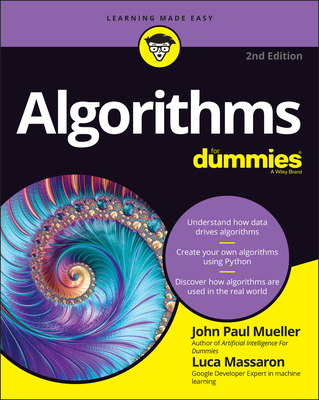-
出版商:
Morgan & Claypool
-
出版日期:
2011-04-21
-
售價:
$1,230
-
貴賓價:
9.5 折
$1,169
-
語言:
英文
-
頁數:
80
-
裝訂:
Paperback
-
ISBN:
1608456951
-
ISBN-13:
9781608456956
-
相關分類:
AI Coding
商品描述
In the history of modern computation, large mechanical calculators preceded computers. A person would sit there punching keys according to a procedure and a number would eventually appear. Once calculators became fast enough, it became obvious that the critical path was the punching rather than the calculation itself. That is what made the stored program concept vital to further progress. Once the instructions were stored in the machine, the entire computation could run at the speed of the machine. This book shows how to do the same thing for DNA computing. Rather than asking a robot or a person to pour in specific strands at different times in order to cause a DNA computation to occur (by analogy to a person punching numbers and operations into a mechanical calculator), the DNA instructions are stored within the solution and guide the entire computation. We show how to store straight line programs, conditionals, loops, and a rudimentary form of subroutines. To achieve this goal, the book proposes a complete language for describing the intrinsic topology of DNA complexes and nanomachines, along with the dynamics of such a system. We then describe dynamic behavior using a set of basic transitions, which operate on a small neighborhood within a complex in a well-defined way. These transitions can be formalized as purely syntactical functions of the string representations. Building on that foundation, the book proposes a novel machine motif which constitutes an instruction stack, allowing for the clocked release of an arbitrary sequence of DNA instruction or data strands. The clock mechanism is built of special strands of DNA called "tick" and "tock." Each time a "tick" and "tock" enter a DNA solution, a strand is released from an instruction stack (by analogy to the way in which as a clock cycle in an electronic computer causes a new instruction to enter a processing unit). As long as there remain strands on the stack, the next cycle will release a new instruction strand. Regardless of the actual strand or component to be released at any particular clock step, the "tick" and "tock" fuel strands remain the same, thus shifting the burden of work away from the end user of a machine and easing operation. Pre-loaded stacks enable the concept of a stored program to be realized as a physical DNA mechanism. A conceptual example is given of such a stack operating a walker device. The stack allows for a user to operate such a clocked walker by means of simple repetition of adding two fuel types, in contrast to the previous mechanism of adding a unique fuel -- at least 12 different types of strands -- for each step of the mechanism. We demonstrate by a series of experiments conducted in Ned Seeman's lab that it is possible to "initialize" a clocked stored program DNA machine. We end the book with a discussion of the design features of a programming language for clocked DNA programming. There is a lot left to do. Table of Contents: Introduction / Notation / A Topological Description of DNA Computing / Machines and Motifs / Experiment: Storing Clocked Programs in DNA / A Clocked DNA Programming Language
商品描述(中文翻譯)
在現代計算的歷史中,大型機械計算器早於電腦出現。人們會根據程序按下鍵盤,最終會顯示出一個數字。隨著計算器變得足夠快速,顯而易見的關鍵在於按鍵,而非計算本身。這就是為什麼儲存程序的概念對進一步的進展至關重要。一旦指令被儲存在機器中,整個計算就可以以機器的速度運行。本書展示了如何對DNA計算做同樣的事情。與其要求機器人或人類在不同時間倒入特定的DNA鏈以進行DNA計算(類比於人類在機械計算器中輸入數字和操作),不如將DNA指令儲存在溶液中,並指導整個計算。我們展示了如何儲存直線程序、條件語句、迴圈以及基本形式的子程序。
為了實現這一目標,本書提出了一種完整的語言,用於描述DNA複合體和納米機器的內在拓撲,以及這種系統的動態。我們接著使用一組基本轉換來描述動態行為,這些轉換以明確的方式在複合體內的小範圍內運作。這些轉換可以形式化為字符串表示的純語法函數。
在此基礎上,本書提出了一種新穎的機器主題,構成了一個指令堆疊,允許以時鐘控制釋放任意序列的DNA指令或數據鏈。時鐘機制由稱為“tick”和“tock”的特殊DNA鏈構成。每當一個“tick”和一個“tock”進入DNA溶液時,將從指令堆疊中釋放一條鏈(類比於電子計算機中的時鐘週期使新的指令進入處理單元)。只要堆疊中仍然有鏈,下一個週期將釋放一條新的指令鏈。無論在任何特定的時鐘步驟中實際釋放的鏈或組件是什麼,“tick”和“tock”燃料鏈保持不變,從而將工作負擔轉移離機器的最終用戶,簡化操作。預先加載的堆疊使儲存程序的概念得以實現為一種物理DNA機制。
本書提供了一個概念示例,展示這樣的堆疊如何操作一個行走裝置。該堆疊允許用戶通過簡單重複添加兩種燃料類型來操作這樣的時鐘行走器,與之前每一步機制都需要添加至少12種不同類型的獨特燃料的機制形成對比。
我們通過在Ned Seeman的實驗室進行的一系列實驗展示了“初始化”一個時鐘儲存程序DNA機器的可能性。本書最後討論了時鐘DNA編程的編程語言設計特徵。還有很多工作要做。
目錄:引言 / 符號 / DNA計算的拓撲描述 / 機器與主題 / 實驗:在DNA中儲存時鐘程序 / 一種時鐘DNA編程語言











